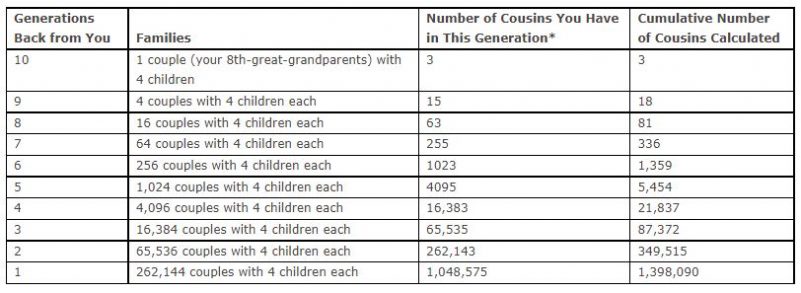
The article “How Many Ancestors Do I Have?” helps you determine how many cousins you have.
A cousin is any descendant of an ancestor who is not also your sibling. So, for example, any descendant of your 3rd-great-grandparents who is not your sibling is a cousin.
Cousin relationships can get complicated. You can have first, second, and third cousins—and more. Cousins can also be designated as “removed,” referring to their distance in generations from you. To learn more, read the article “What is a Second Cousin and a Cousin Once Removed?”
How can you tell how many cousins you have? You could count them or you can use a formula to approximate the number.
Start calculating from one set of grandparents to figure out how many cousins you might have in one ancestral line. Use the formula fc-1=X, where f is the number of families in that generation, c is the number of children in each family, and X is the number of cousins in that generation. In the formula, you subtract 1, because one of the children in each generation would have been your direct ancestor, not your cousin. You also have to use an approximate number of children, c.
For the sake of illustration, the chart below uses a set of your 8th-great-grandparents—they would be 10 generations back from you. The chart also assumes that the couples in each generation had 4 children. (You can choose a number that seems reasonable in your family line.)

Some of the lines will converge when cousins marry cousins, but remember that this is an approximation. As you can see in this chart, 10 generations back, you could have a million cousins and about 1.4 million total on that line.
The post How Many Cousins Do You Have? first appeared on LDS365: Resources from the Church & Latter-day Saints worldwide.
Continue reading at the original source →



